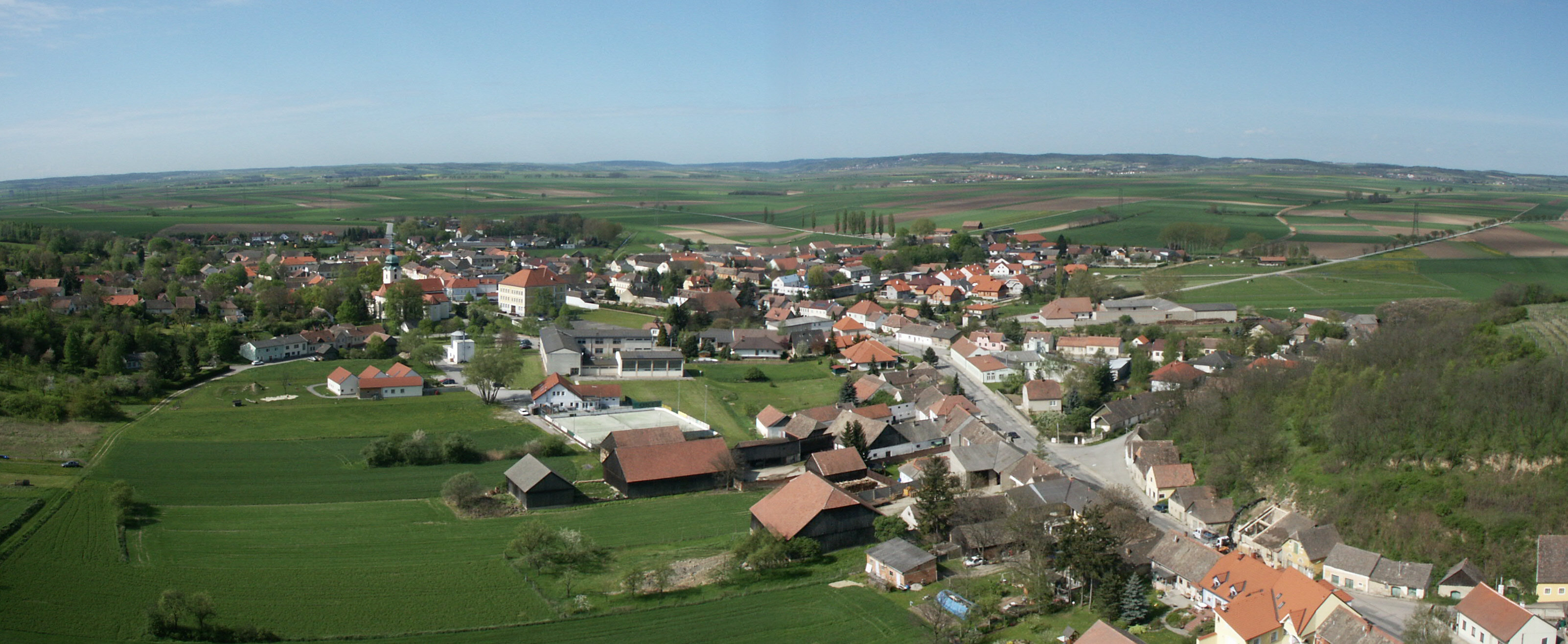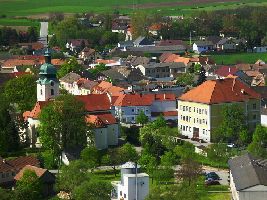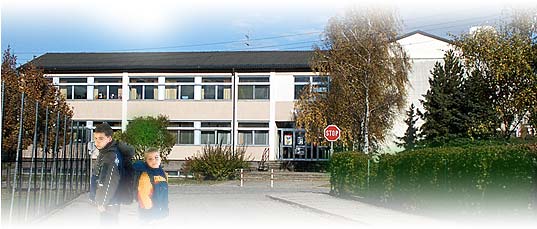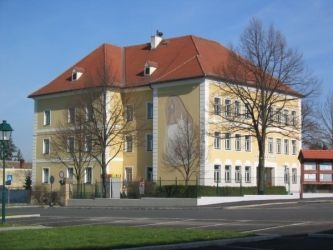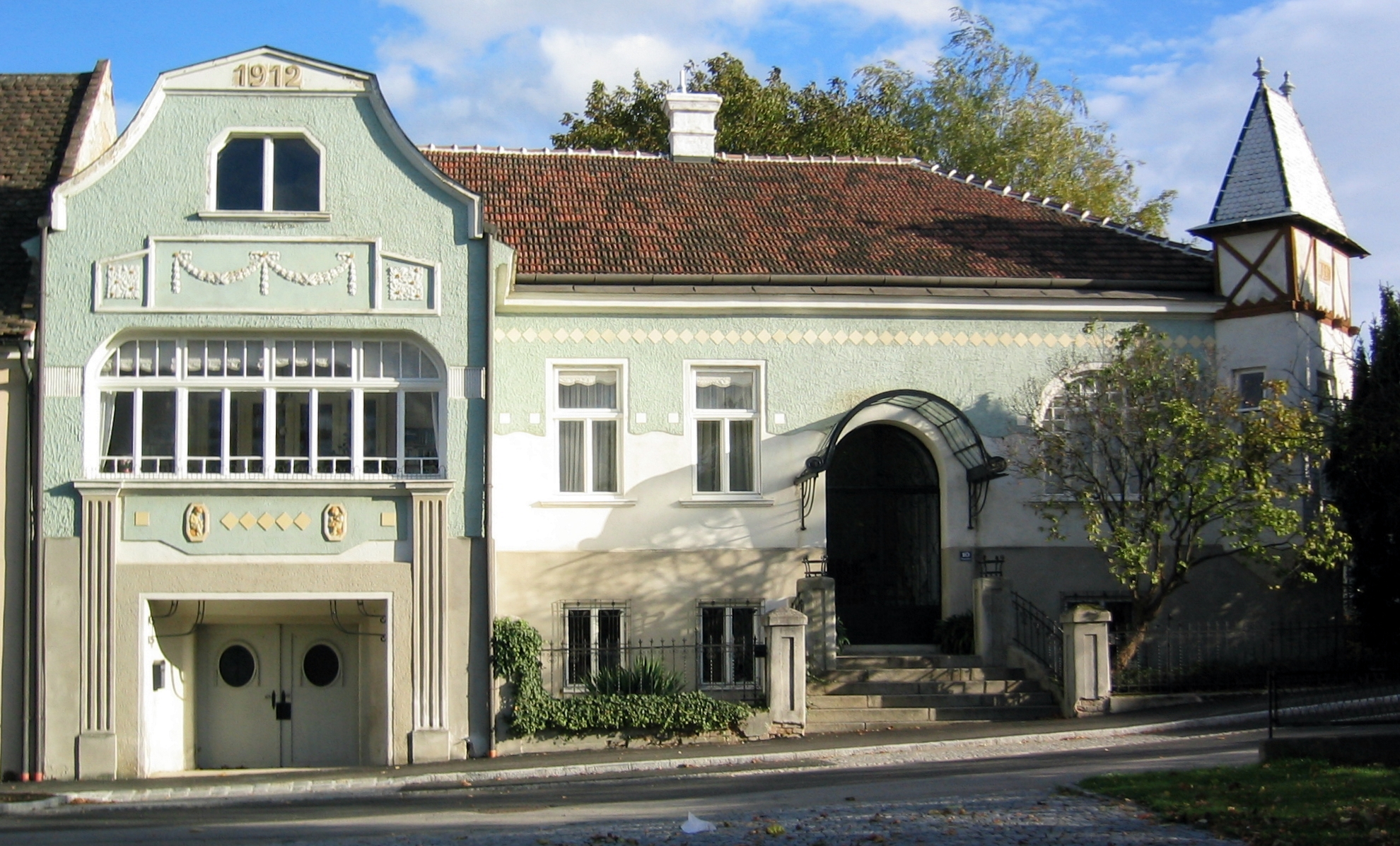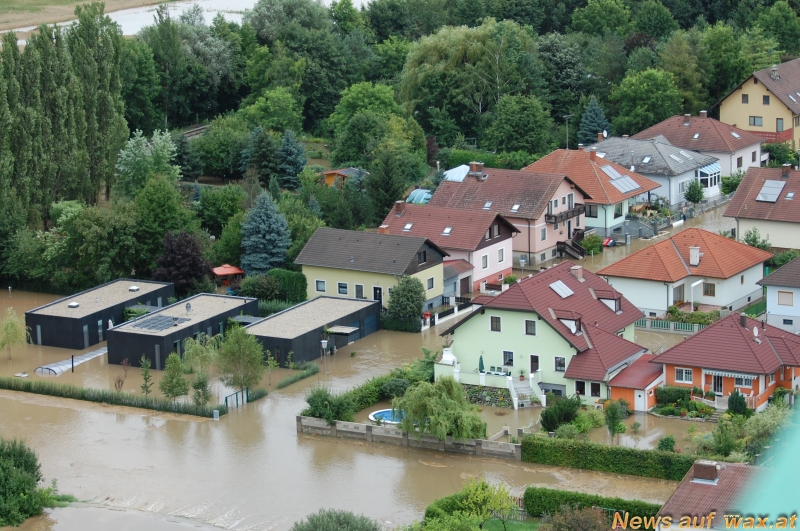Sitzendorf an der Schmida
Seat village on the Schmida is a market town with 2150 inhabitants ( 1 January 2013 ) in the western wine district in Lower Austria.
- 2.1 Population development
- 5.1 See also
- 6.1 people with links with the community
- 6.2 freeman
Geography
Seat village on the Schmida is located on the Schmida. The area of the municipality covers 61.83 square kilometers. 6.59 percent of the area is forested.
Community structure
The cadastral seat village is the capital of the United municipality and is also the largest city.
Brown village (6.19 km ²) Mrs. village ( 12.44 km ²) Goggendorf ( 8.43 km ²) Small Kirchberg (2.23 km ²) Niederschleinz ( 6.47 km ²) Pranhartsberg (3.21 km ²) Roseldorf ( 10.84 km ²) Seat village ( 8.31 km ²) Hard seat (3.72 km ²)
Brown village (D) Mrs. village on the Schmida (D) Goggendorf (D) Small Kirchberg ( D) Niederschleinz (D) Pranhartsberg (D) Roseldorf (D) Seat village on the Schmida (M) Hard seat (D)
The nine villages with population as at 31 October 2011:
- Brown Village (173 )
- Mrs. village on the Schmida (290 )
- Goggendorf (229)
- Small Kirchberg ( 67)
- Niederschleinz (305 )
- Pranhartsberg (49 )
- Roseldorf (301 )
- Seat village on the Schmida ( 636)
- Hard seat (102 )
Neighboring communities:
History
Over the period up to 1794 are available in the community itself no documents because of a major fire on March 20, 1790 all records of the parish and the community were destroyed. The story up to this point can therefore only be reconstructed from records maintained outside the community. The oldest existing log in the municipal archives is dated November 11, 1793. Since then, there are protocols and documents completely and were in the contribution to the history of Leo Maria Trapp, in the history of Ferdinand Mayer and most recently worked in the home book by Peter Aichinger Rosenberger.
In the German of the rulers, together with the Austrian Margrave in the 11th century conquered against the Moravians and Hungarians Lower Austrian district donations were made to various earls. Among them were the originating from the Bavarian Chiemseegau victory Hardinger which opened especially the space of seat village, village woman and Pillichsdorf economically.
Around 1020 it was seat village was by Count Sieghard V. from Chiemgau ( also Sicco or Sizzo called ) was founded as Angersdorf or Kirchweiler. From this Sicco or Sizzo also the name of the place, first Sicindorf size Dorff and finally seat the village derives from then. From the far-flung possessions and rights of dominion victory Hardinger place names as evidence Siezenheim ( near Salzburg ), sitting Hart ( Cadastral seat of village on the Schmida ) Sitzenberg or Sieghart churches.
The first written mention of seat village as a place and as a parish dates back to 1141, when on September 24, Bishop Reginbert of Passau, the parish church of Great consecrated in today's municipality Hollabrunn and awarded her the tithe to Großnondorf the community Gunter village of the parish seat village belonged.
In the 13th century the patronage and the bailiwick of the church of the village passed through the seat counts of Ortenberg as heirs of the victory Hardinger to the Bavarian monastery Baumburg and has since been the center of the monastic estates in the area. The fact that in the sitting village - about the coat of arms of the municipality - is to always find the " Passau wolf ," here probably has its origin.
Now began a very moving story, and many well-known gender changed as owner of the manorial rights.
Occurred early on as lords resident in the neighboring forest district, originally high free Kuenringer on. In the time of their rule of the construction of a water castle, and took place in the first half of the 13th century system of the rectangular main square of the village seat falls.
Population Development
According to the results of the 2001 census, there were 2208 inhabitants. In 1991, the market town of 2170 inhabitants, 1981 and 2380 in 1971, 2738 inhabitants.
Policy
- Mayor of the municipality is Leopold lobster from the ÖVP. Office manager Gerhard Eser.
- City Council: The City Council election on March 14, 2010 showed the following distribution of seats: ÖVP 15, Social Democratic Party 6, other no seats.
Economy and infrastructure
Non-agricultural work places there were in 2001 69, agricultural and forestry holdings according to the 1999 survey 233
The number of persons employed at the residence was according to the 2001 census 935 The employment rate in 2001 was 43.8 percent.
The municipality seat village on the Schmida is a member of the landscape park Schmidatal.
Culture and sights
- The late-Gothic parish church in the core hl. Martin with wide three-aisled church has remarkable dreichorigem net vault. In the parish church is the grave of the board of Hanns Wulfestorff from the year 1504.
- The main historical square and three Grade II listed building protection:
- Celtic exhibition: in the town hall of the village there is a seat showroom to the excavations of Celtic settlement on Sandberg ( permanent exhibition ). Sightseeing in the morning during the opening times of the commune office
- Archaeological excavations at the Sandberg northeast of Roseldorf ( largest known Celtic settlement )
- District grave sites in Pranhartsberg
- Biotope in Pranhartsberg with trail " Orchids"
- Cellar lanes in all cadastral
- Nature reserve north of Miihlberg Goggendorf, including Occurrence of soil - tragacanth, Adriatic belt tongue and Ruthenian globe thistle.

